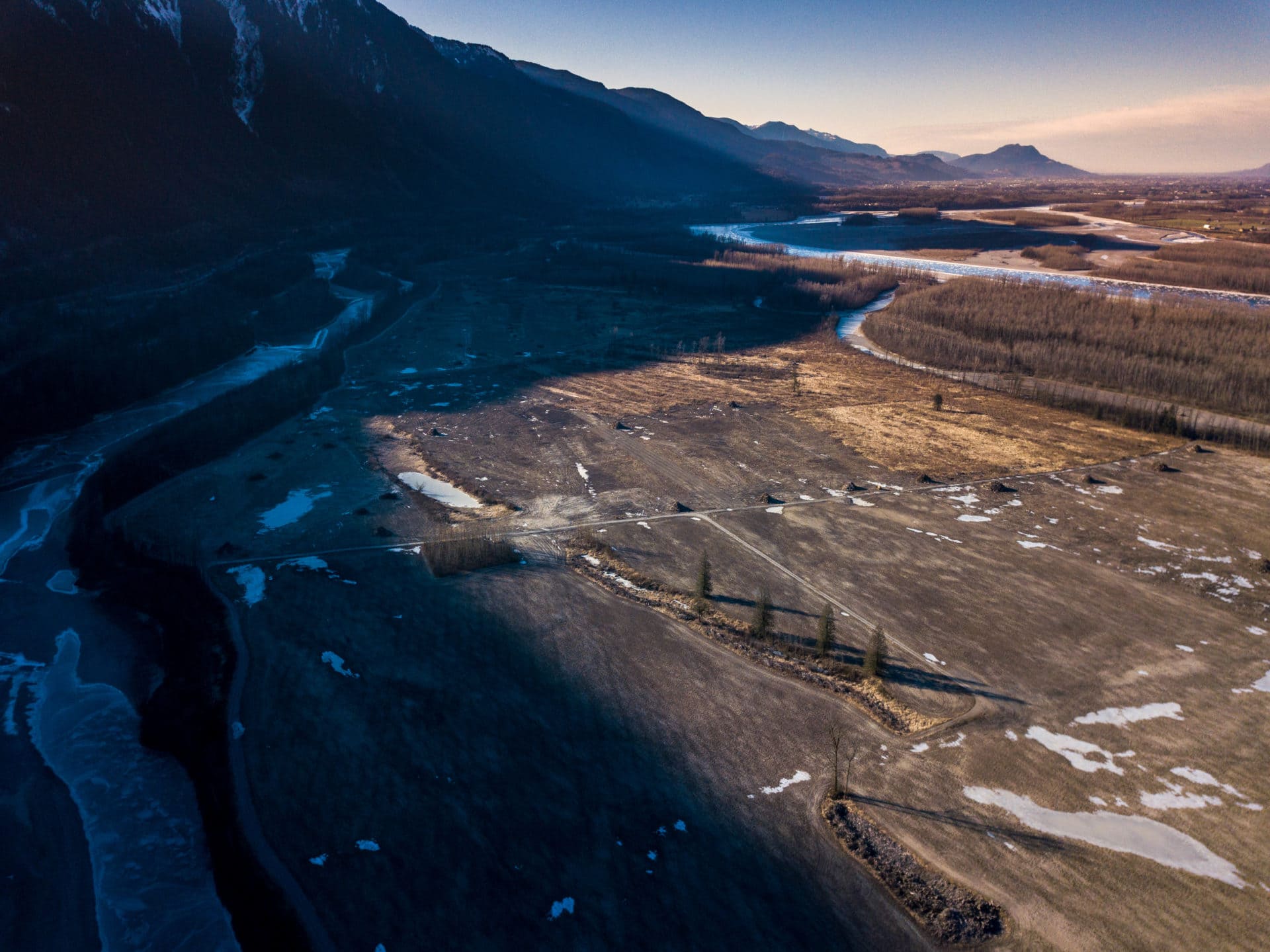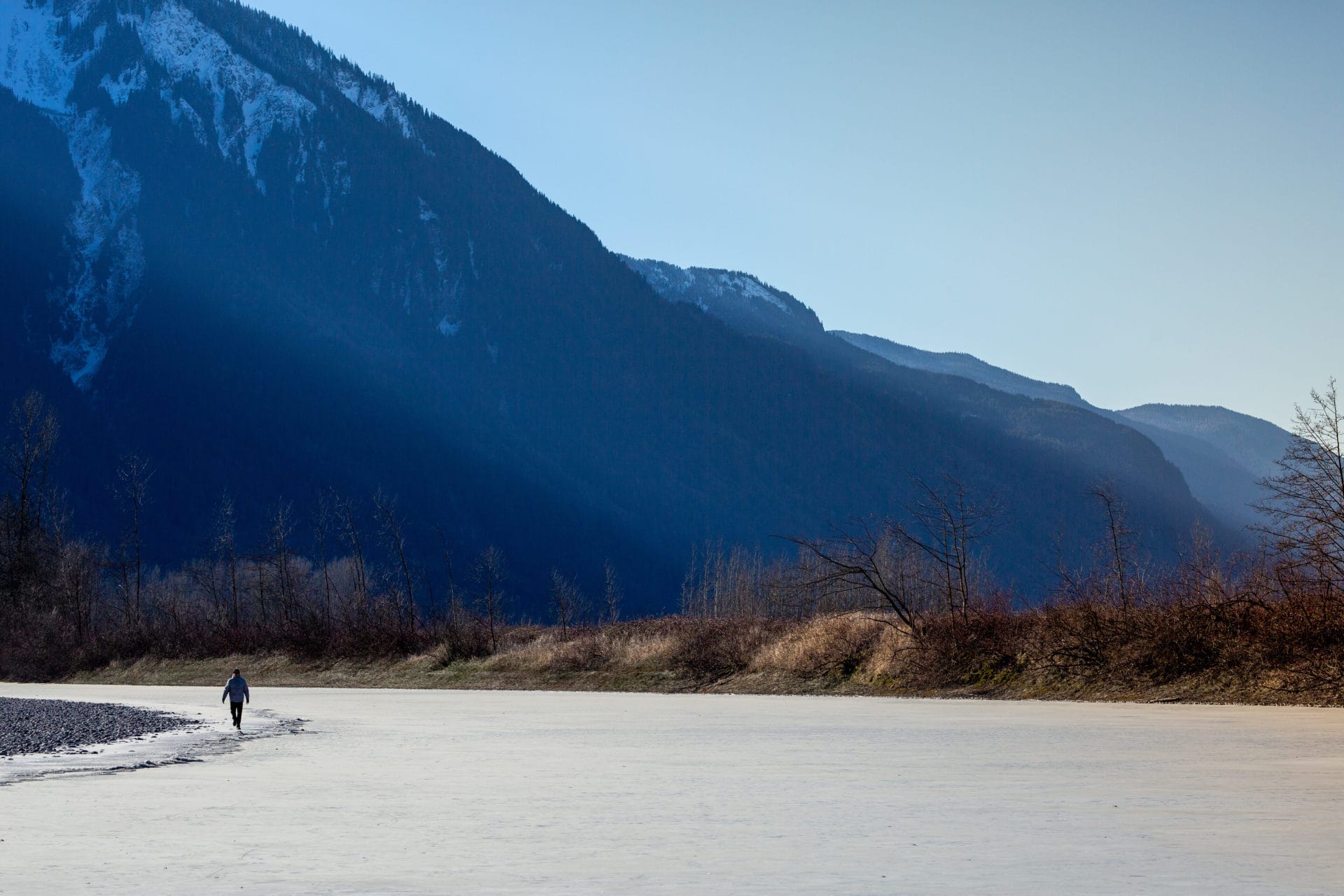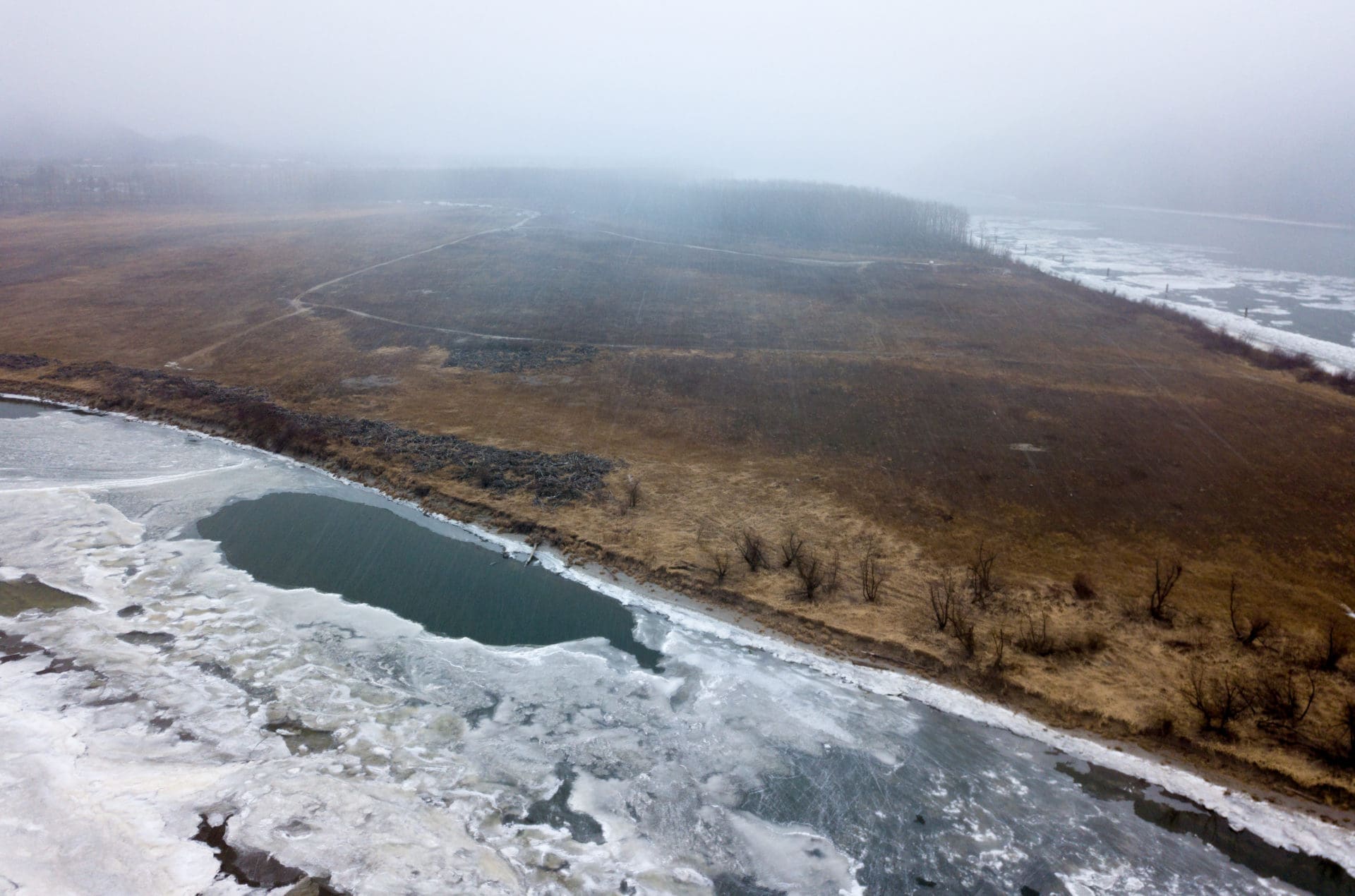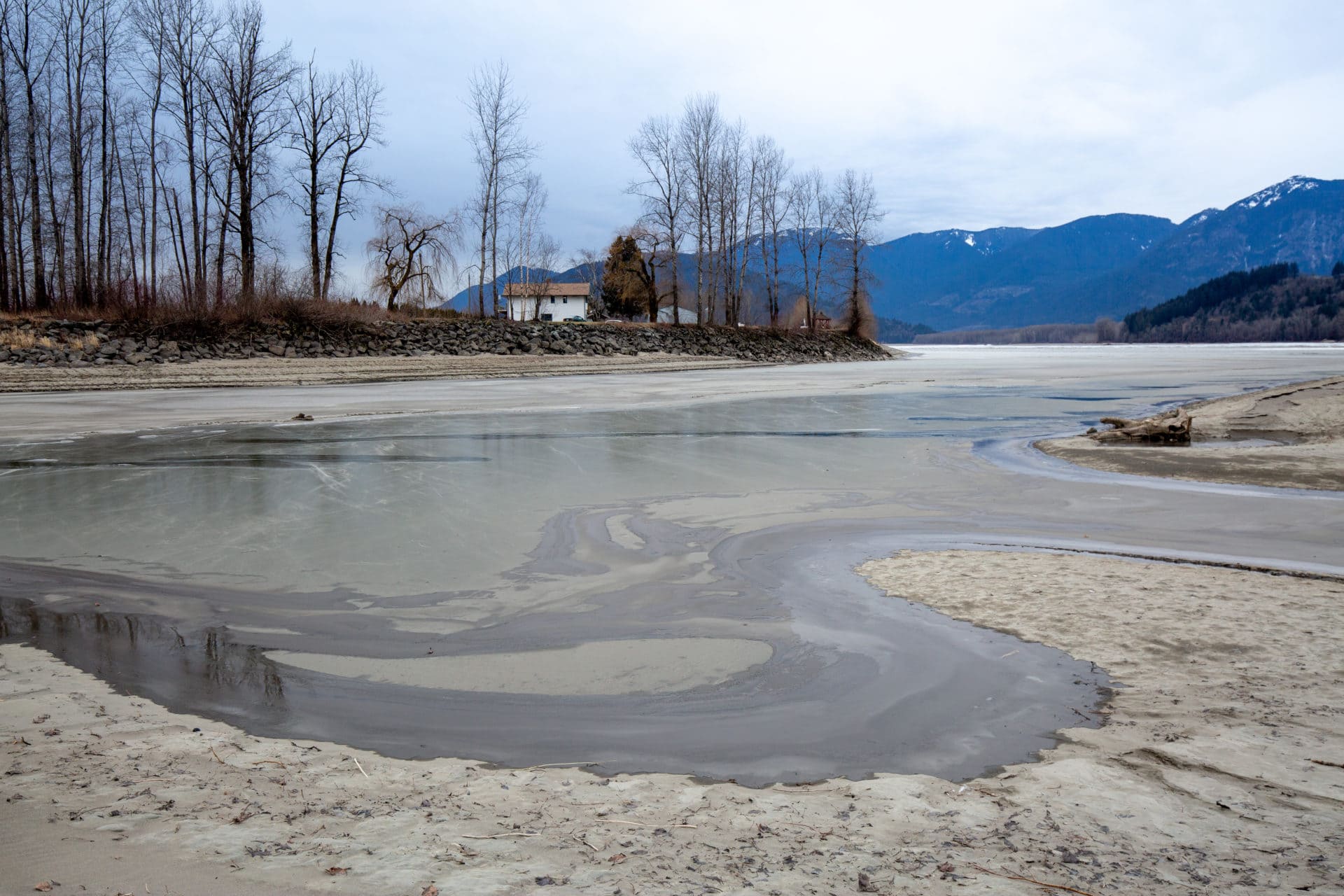
The Right Honourable Mary Simon aims to be an Arctic fox
Canada’s first-ever Indigenous governor general doesn’t play favourites among our majestic natural wonders, but she...
Three of the last un-diked islands on the lower Fraser River have been bought by developers and heavily logged, threatening the most productive habitat stronghold for salmon and white sturgeon left in the entire Fraser watershed.
Fisheries scientist Marvin Rosenau, an instructor in the British Columbia Institute of Technology’s fish, wildlife and recreation program, found out about it by accident. Back in June 2017, he was driving home to Abbotsford from a fishing trip in the interior, when he turned a bend just above Bridal Falls and looked down at Herrling Island.
“The whole landscape was bereft of trees,” he said of the 780-hectare island in the main stem of the Fraser River about 20 km northeast of Chilliwack. “It just ripped my guts out to see that.”
For Rosenau, a biologist and obsessive sports fisherman who has dedicated over 30 years to protecting the river, it was just the latest calamity for the Heart of the Fraser, one of the planet’s most productive networks of fish-friendly channels, islands and wetlands stretching 80 kilometres between Mission and the town of Hope.
For more than a decade he battled Fraser Valley developers who dug up large amounts of gravel from this stretch of river, under the guise of “flood protection” — resulting in massive salmon mortalities and, critics claim, permanent changes to the structure and flow of the river between Mission and the Harrison River confluence.
More than two years after the purchases were made, the fate of the islands remains uncertain, as a coalition of conservation groups and allies rally to raise funds in a last-hour attempt to buy and protect them in perpetuity.
The importance of saving these last island nurseries at this moment — in the wake of ongoing valley development, poor salmon marine survival, climate change and much more — cannot be understated, Rosenau says.
“This is life or death for an entire ecosystem.”

A logged section of Herrling Island in February 2018. The channel to the left is among the most important white sturgeon habitat left on the entire Fraser River, providing critical spawning habitat during spring freshet. Photo: Jayce Hawkins / The Narwhal
For all the Fraser salmon born in natal streams stretching from nearby Harrison Lake to the headwaters about 1,300 kilometres upstream, this lower Fraser habitat is a critical life-line for juveniles as they migrate to the estuary and into the Salish sea.
Today, 30 species of fish rear, spawn and migrate through this area — including the world’s biggest remaining run of pink salmon.
Then there’s the freshet. Each spring the islands are partially flooded, converting dry land into the perfect shallow-water habitat for rearing sturgeon and salmon. As the fish move onto these island shallows, they find food and protection from the fast-flowing floodwaters. In the case of Herrling Island, sturgeon spawn and rear in the narrow, long channel between the island and the mainland.
Such seasonally flooded habitats have become rare: most of the lower Fraser’s foreshore wetlands, marshes, islands and riparian forests have been logged, diked, drained and converted to farming since the arrival of settlers in the late 1800s.
The situation is particularly dire for the Fraser chinook stocks that have collapsed or are approaching collapse. A late November 2018 assessment by the Committee on the Status of Endangered Wildlife In Canada (COSEWIC) found that seven stocks on the Fraser and the Thompson (a Fraser tributary) are endangered; four, including two on the lower Fraser, are threatened, and one is of special concern.
Mark Angelo, an advisory member on the board of the 100,000-member Outdoor Recreation Council of B.C., who has been named to both the Order of Canada and British Columbia for his river conservation work, says this island habitat is critical to the health of these fish if they are to recover.
“Pretty much every chinook that comes out of the Fraser spends time in and around these islands,” says Angelo, who is one of the leaders behind the push to organize an islands purchase. “From Herrling Island all the way down to Strawberry Island, you are talking hundreds of millions of juvenile salmon that rear within that space.”

The frozen back channel of Herrling Island, with the Cascade Mountains in the background. The new owners have applied to build a private bridge, which would destroy sturgeon habitat near this spot. Photo: Jayce Hawkins / The Narwhal
The same chinook that rear on the lower Fraser, will eventually migrate into the ocean, where they will become the primary food source for endangered southern resident killer whales.
Misty MacDuffee, a biologist with Raincoast Conservation Foundation’s wild salmon program, says resident killer whales historically relied on Fraser chinook year-round, including during the spring, when more than 100,000 would return to the Fraser.
But in the last 20 years, the early-timed chinook runs from April to July have completely collapsed, she says. That’s why protecting the remnants of the lower Fraser’s critical floodplain habitat is now so critical.
“You can draw a straight line between the health of Fraser chinook and southern resident killer whales.”
Back in summer 2017, Rosenau made inquiries and confirmed that Herrling and two other un-diked Fraser islands (nearby Carey island (500 hectares) and Strawberry Island (about 400 hectares, located near Mission) had been sold to three separate developers.
Prior to their sale, all three islands were owned by Krueger Products, a pulp and paper company, which operated super-fast-growing hybrid cottonwood plantations on Herrling, Carey and Strawberry islands.
From 1985 onwards, much of the land (then owned by Scott Paper) was mechanically cleared and later applied with as much as 30 tonnes per hectare of waste sludge from pulp mills and sewage treatment plants — including human “biosolid” fertilizer from Metro Vancouver’s Annacis Island wastewater plant — despite concerns about copper and endocrine-disrupting compounds in the waste. All of this in the name of growing pulp for toilet paper, manufactured at the New Westminster mill.
Impacted though they were, the plantation islands were never diked — meaning that the critical seasonal pulse of floodwater that creates such amazing fish habitat for months beginning around March remained intact.
When Krueger decided to sell the islands, there was an initial opportunity to purchase them for conservation, but when that fell through, Herrling was bought by a company run by the Klaassen family, a prominent Fraser Valley family that also owns Jake’s Gravel, one of the biggest gravel concerns in the valley. Carey Island was bought by members of the Guliker family, another valley family with large agricultural holdings. Strawberry is owned by a businessman with construction interests in Washington state and B.C.’s Lower Mainland. All three islands are now in the agricultural land reserve.
All three islands were heavily logged after purchase, especially the parcel on Strawberry Island, which has been scalped right to the banks.
The developers plan to convert each island into farmland to grow blueberries, livestock and other cash crops. But for this to happen, Rosenau says the next step will be to build bridges and dikes to enable year-round access.
Dikes do not come cheaply: at about $100,000 per metre, it could cost as much as $140 million to dike Herrling island alone — although the cost would be lower given the new owners’ existing construction and gravel companies.
Meanwhile the applications for permits to build private bridges to Herring and Carey islands continue to languish nearly two years after being filed with the province.
A spokesperson for the provincial Ministry of Forests, Lands, Natural Resource Operations and Rural Development said the two bridge applications remain undecided, and that time has been required to consult with local First Nations.
But an exchange in the legislature involving Environment Minister George Heyman indicated that the destruction of prized sturgeon habitat by bridge infrastructure is also an issue in the delay.

Much of un-diked Strawberry Island, near Mission, was clear-cut to the banks by the new owners. The island itself becomes important fish habitat for months on end during freshet; Nicomen Slough (in the foreground) also provides important rearing spots for juvenile chinook salmon and white sturgeon throughout the year. Photo: Jayce Hawkins / The Narwhal
In late November of last year, the Department of Fisheries and Oceans ordered the new owners of Herrling and Carey islands to take “corrective measures” for unspecified damage on their respective islands.
In an e-mail to The Narwhal, the department would not confirm what specifically the owners were correcting, or whether a wider investigation is ongoing. The spokesperson also wouldn’t comment on whether the federal government would permit dikes to be built around Carey or Herrling islands.
Rosenau thinks that skirting federal law will be a problem for the developers.
“Destroying that island [Herrling] is ‘serious harm’ [under the federal Fisheries Act],” he says. “You can’t put a dike there. And if you can’t put a dike there, that property is worth nothing.”
Klaassen Farms’ Jake Klaassen was not available to answer questions.
Another potential future for Herrling and Carey is to be bought for conservation. Angelo confirmed that efforts are now afoot (with the participation of the Nature Conservancy of Canada and environmental groups like Watershed Watch Salmon Society) to pull together funding through a “private-public consortium.”
(The Ministry of Forests, Lands, Natural Resource Operations and Rural Development would not confirm if it is involved in funding efforts to buy the islands, other than saying, “the focus of the province remains on conservation and protection of environmental values of the area, regardless of ownership.”)
If enough money can be raised, Angelo says the goal will be to purchase, secure, protect and restore the two islands. This could eventually also include Strawberry Island.
“We have no interest in holding title ourselves,” wrote Angelo by e-mail on February 14. “Rather, it would be most appropriate if title was jointly held by the Nature Conservancy of Canada, the Stó:lō and other First Nations.
Coming to such an arrangement will be a complex political undertaking. The Fraser Valley is home to the Stó:lō Nation — a Chilliwack-based, political amalgamation of eleven Stó:lō communities along the lower Fraser, each with its own independent voice. The same goes for another eight local First Nations under the banner of the Stó:lō Tribal Council. Some local First Nations are not members of either.
Complicating the situation is the past friction between conservationists and some First Nations over gravel mining in the Fraser Valley — for example, local First Nations like Cheam and Seabird Island have in the past had relationships with the construction and gravel interests of the Klaassen family, who now own Herrling island.
Cheam First Nation Chief Ernie Crey and representatives of the Stó:lō Nation did not reply to requests for comment by press time.

The un-diked coast of Carey Island stands in contrast to the heavily armoured coastline — and it’s this lack of flood control that makes it such amazing fish habitat. Photo: Supplied.
Seabird Island First Nation Chief Clem Seymour says he has not been approached by Angelo or conservation interests about the islands to date. “They need to talk to our people though, because [Herrling island] is right at our front door,” he said.
Herrling Island takes its name from Seabird Island band member Elizabeth Herrling, who lived on the island highlands for about 40 years before moving back to the mainland, Seymour says.
Habitat loss is an important issue on the lower Fraser, he says, but the biggest cause is the build-up of gravel in the Heart of the Fraser — the removal of which prominent conservationists have fought to limit.
Seymour doesn’t think the conversion of Herrling to agriculture is a problem. “All it’s going to be used for is a blueberry farm,” he said, adding he doesn’t think a dike will be necessary. Concerns about the impact of dikes on fish habitat are a “scare tactic,” he says, used by conservationists to raise money to buy the islands.
“And I don’t know if [the island owners] are going to make very much money on it, they’ll probably spend a lot of years paying [for] that bridge.”
Willy Charlie, a former chief, councillor and the current chief administrator for the nearby Sts’ailes First Nation, says they have already talked with Angelo about protecting the islands.
Sts’ailes’ traditional territory includes parts of the lower Fraser and Harrison River watershed — the latter being among the largest and best chinook salmon spawning areas left in the entire Fraser system. Charlie says a lot of the Harrison chinook rely on the health of the main-stem Fraser for their survival as they “run the gauntlet” on their way to the estuary and sea.
He says that Sts’ailes support the idea of protecting the two islands for fish habitat, and of creating some kind of title-sharing arrangement involving the First Nations of the lower Fraser. (A call to Chief Ralph Leon Jr. of Sts’ailes First Nation was not returned by deadline).
“We think this kind of arrangement, where we come together as a collective to look after fish habitat can happen and should happen,” he says. “We all have the same interest.”
Get the inside scoop on The Narwhal’s environment and climate reporting by signing up for our free newsletter. A $335 million funding commitment to fund...
Continue reading
Canada’s first-ever Indigenous governor general doesn’t play favourites among our majestic natural wonders, but she...

In Alberta, a massive open-pit coal mine near Jasper National Park is hoping to expand...

A trade war could help remake B.C.’s food system, but will family farmers be left...
